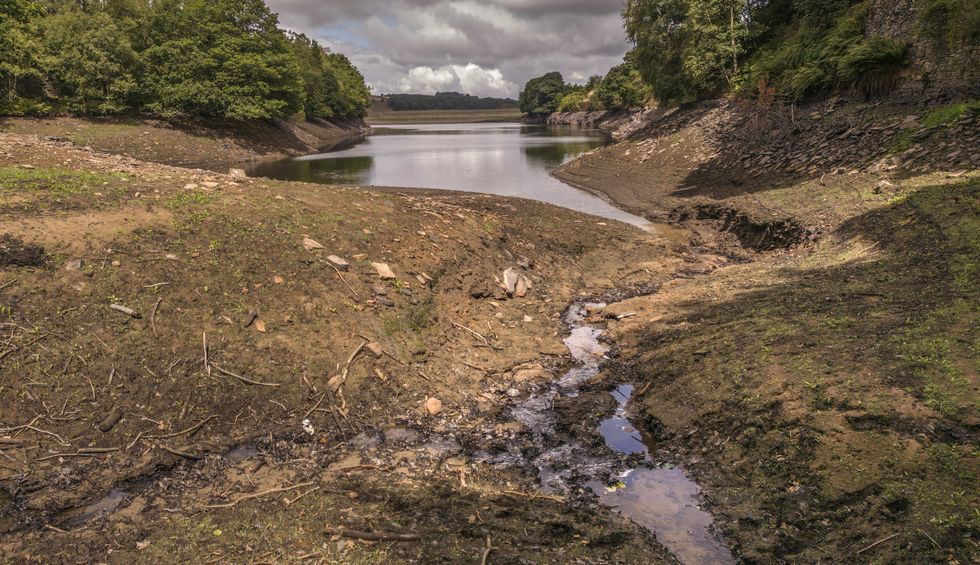Don't Miss
Most Read
Trending on GB News
England has had its driest July since 1911 so far this month, figures from the Met Office show.
The latest data reveals there has only been 15.8mm (0.6inches) of rain averaged across England, just 24% of the amount that would be expected in an average July.
The Met Office said that at this stage in the month – up to July 26 – the country would have expected well over three-quarters of the month’s rain to have already fallen in an average July.
Across the UK it has been the driest July since 1984 so far, with an average of 37.7mm (1.5 inches) of rain, and it is the eighth driest in records stretching back to 1836.
People are being urged to use water wisely as England faces drought in August if the hot and dry weather continues.
Most of England has moved into “prolonged dry weather” status – meaning the Environment Agency is now taking precautionary actions to mitigate impacts.
Low water levels at Holme Styes reservoir in Holmfirth West Yorkshire
PA
Nowhere in England is currently considered to be in a drought and most water companies are maintaining good reservoir storage for summer demand.
The EA said if further measures are required, temporary use bans – more commonly known as hosepipe bans – will be determined by individual water companies.
Officials said recent abnormally high temperatures have exacerbated conditions resulting from lower than normal rainfall so far this year in many parts of England.
The Met Office is forecasting potentially several more dry weeks ahead, particularly in the south and east of the country, so the EA and water companies are now enacting the early stages of their drought plans and calling on everyone to do their bit in managing water use.
The EA takes a broad range of measures to manage drought risk, with many already in action.
People walk in the sun in Trafalgar Square, central London
Dominic Lipinski
Measures include helping those areas which are the worst affected by prolonged dry weather by operating water transfer schemes that allow rivers to be artificially maintained and working with the farming sector to provide greater assistance to farmers in prolonged dry weather areas.
Other measures include reoxygenating water and rescuing fish in distress where river flows are especially low, and supporting the Fire and Rescue Service to tackle waste fires and wildfires.
Harvey Bradshaw, EA executive director for the environment and chair of the NDG, said: “While last week’s extreme high temperatures are now behind us and there are currently no plans for restrictions on essential water use, we can all do our bit by reducing unnecessary water consumption and following advice from our water company to ensure this remains the case while our rivers are exceptionally low.
“We are working very closely with water companies, farmers and other water users to manage the current situation.
“Today’s meeting was an important step in agreeing joint actions to protect our water resources with further dry weather forecasted for August, including ever-closer working to monitor and manage water supplies and the environment.”












